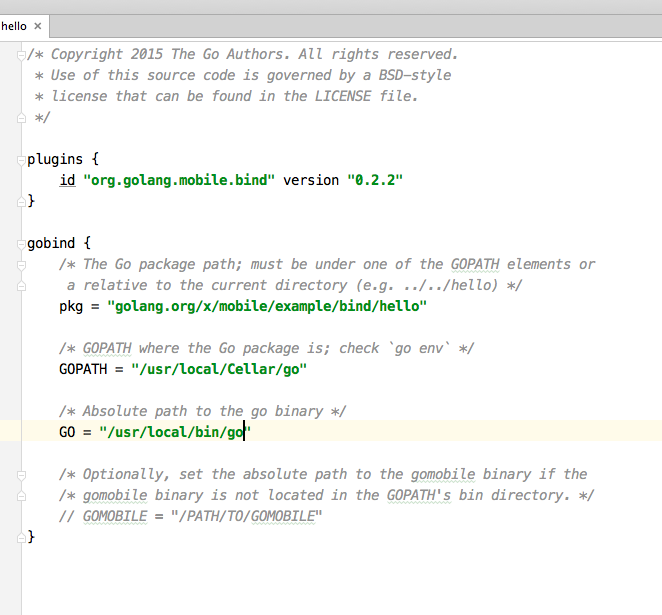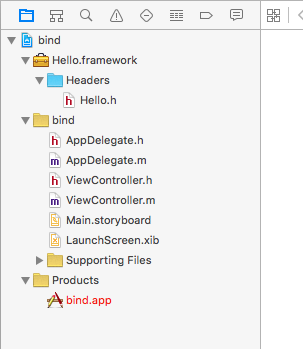使用 Go 进行 iOS 和 Android 编程
虽然 Go 并不是一门新语言,不过最近两年来 Go 还是增加了很多有趣的特性,而且使用这门语言的知名项目的数量也在快速的增长。我写过一篇文章, 介绍了 SitePoint 用到的编程语言 ,其中提到了移动端的支持,所以我觉得需要研究一下可能性。
我很高兴 Android 是支持 Go 语言的,这一方面应该是二者都是 Google 的技术,另一方面恐怕也与开发者希望用 Go 替换 Java 的愿望有关。
开始
你需要 安装 Golang 1.5+ 。
接下来需要安装 GoMobile 工具,用于编译和运行 Android 和 iOS 的应用:
go get golang.org/x/mobile/cmd/gomobile gomobile init
我们会参考 gomobile 包里的例子,位于 GoLang Install dir/src/golang.org/x/mobile/example/。如果你没有安装这些例子,参考下面的命令来安装:
go get -d golang.org/x/mobile/example/basic
构建和安装 Go 的 Native 应用
对于很多应用,编译 Go 的 Native 应用时,忽略那些平台相关的库和接口是可以接受的。如果是这样的情况,编译已有的 Go 代码是很轻松的,我们可以选择使用一个功能子集,这些功能包括:
-
App 控制和配置
-
OpenGL ES 2
-
资源管理
-
事件管理
-
一些实验性的包,包括 OpenAL、audio、font、sprite 和运动传感器
我们将从已有的 gomobile 项目里的一些例子开始,你可以用自己项目里的文件替换它们。
Android
构建一个 Android 的 APK 包
gomobile build -target=android golang.org/x/mobile/example/basic
部署到设备上
gomobile install golang.org/x/mobile/example/basic
iOS
构建一个 iOS 的 IPA 包
gomobile build -target=ios golang.org/x/mobile/example/basic
部署到设备
跟 Android 不一样,对于 iOS 来说没有一个统一的部署命令,你需要用你熟知的方式把包拷贝到设备或者模拟器上,例如使用 ios-deploy 工具。
可以用上面的步骤,试试 golang.org/x/mobile/example/audio 这个例子。
让我们深入了解一下 audio 这个例子(详细的代码就不列出了了),你并不需要对 Go 语言非常精通(我就是不太精通),我们先了解一下都能干些啥。
首先你可以看到一些 import 语句:
import (... "golang.org/x/mobile/app" "golang.org/x/mobile/asset"...)
如果你查看一下 import 的这些包所在的目录 GoLangInstalldir/src/golang.org/x/mobile/* 下的文件,你可以发现那些编译到你的代码里的那些 Java 和 Objective-C 文件。
再进一步了解一下,你可以在代码里找到对这些 import 的包(例如 app 和 glctx)的引用。
Going Native
我们可以用 Go 写代码,然后构建一个紧凑的优化过的 native 应用,但是目前这个应用还不是完全的 native 的风格,因为所有依赖的库还都是 Java 或者 Objective-C / Swift 的。我们怎样来改善这个体验呢?
Go Mobile 团队给我们了另一个选择,可以在一个 native 应用里使用 go 的包(也即你的程序)。特别是共享一些公共的 Go 代码,把它们绑定到 native 的代码上是非常好用的。这种方式上手很快,不过长期来说维护会比较麻烦一些。
Android
如果使用 Android Studio,可以导入项目 GoLang Install dir/src/golang.org/x/mobile/example/bind/android,打开 build.grade (hello 模块) 文件,更新一下 GOPATH 和 GO 的路径,下面是我的文件内容(我是用 Homebrew 安装的 GoLang):

同步 Gradle 后,应用就可以部署到仿真器或者真实设备上了。
注意:当前这种方式只支持基于 ARM 的设备和仿真器。
让我们看一下 Java 和 Go 的代码:
MainActivity.java
package org.golang.example.bind; import android.app.Activity; import android.os.Bundle; import android.widget.TextView; import go.hello.Hello; public class MainActivity extends Activity { private TextView mTextView; @Override protected void onCreate(Bundle savedInstanceState) { super.onCreate(savedInstanceState); setContentView(R.layout.activity_main); mTextView = (TextView) findViewById(R.id.mytextview); // Call Go function. String greetings = Hello.Greetings("Android and Gopher"); mTextView.setText(greetings); }} src/golang.org/x/mobile/example/bind/hello/hello.go
package hello import "fmt" func Greetings(name string) string { return fmt.Sprintf("Hello, %s!", name)} 通过 import go.hello.Hello 来 import 对应的 go 文件,文件里的 Greetings 函数在 Java 代码里可以通过 Hello.Greetings 来调用。并不需要太复杂的步骤,在go 函数和 native 的 UI 元素之间就可以建立上绑定关系。
iOS
把一个 iOS 应用和 Go 程序直接进行绑定需要不同的步骤。首先需要运行下面的命令:
cd GoLang_Install_dir/src/golang.org/x/mobile/example/bind gomobile bind -target=ios golang.org/x/mobile/example/bind/hello
这样会在当前目录下创建一个叫 Hello.framework 的 bundle,在项目里可以使用它。
在 Xcode 打开例子中的 iOS 项目,位于 GoLang Install dir/src/golang.org/x/mobile/example/bind/ios/bind.xcodeproj ,把 Hello.framework 拖到项目里,如果需要,选择" Copy items"。目录结构现在看上去是下面这样:

构建和运行这个应用(更像 Android 应用),我们可以看到在 Objective-C 代码里进行 Go 函数的调用。
看一下现在的代码:
#import "ViewController.h" #import "hello/Hello.h" // Gomobile bind generated header file in hello.framework @interface ViewController () @end @implementation ViewController @synthesize textLabel; - (void)loadView { [super loadView]; textLabel.text = GoHelloGreetings(@"iOS and Gopher"); } @end #import "hello/Hello.h"导入了之前生成的 framework,textLabel.text = GoHelloGreetings(@"iOS and Gopher");调用了它暴露出的一个函数来设置一个 label 的值。
也可以使用同样是自动生成的 基于 Swift 的项目里的 Objective-C 的 framework ,像下面这样:
let msg = Hello.GoHelloGreetings("gopher") 是否值得?
嗯,简单的说可能是不值得。如果你已经在使用 Go 来写应用了,并且不在乎应用是否 native 的,那么你可以放开手继续做,因为你已经知道了构建和部署用 Go 写的 native 应用是很简单的。如果你打算花更多的精力尝试一下绑定,你可以走的更远一些,不过还是需要稍微控制一下。
如果你没在用 Go,那么就不太值的现在就在开发 native 的移动应用时考虑 Go。不过我有很强烈的预感,在不久的将来,Go 会成为这方面很有潜力的选择的。最后欢迎你的建议和意见。











![[HBLOG]公众号](https://www.liuhaihua.cn/img/qrcode_gzh.jpg)

